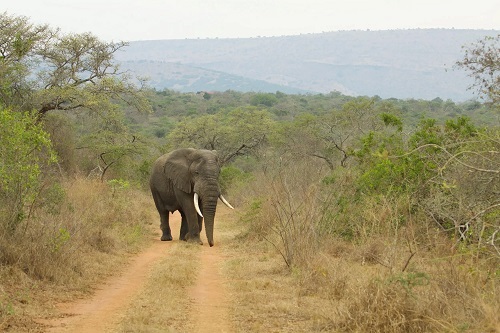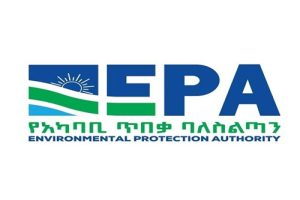
According to Ethiopian Wildlife Protection Authority (EWPA), Ethiopia’s total protected areas that include national parks, sanctuaries, forest priority and biospheres cover over 12.17 percent of the country’s total area coverage. Out of this the 27 national parks, sanctuaries and wildlife protected areas cover over 9.6 percent.
Ethiopia’s landscape, that includes highlands, mountains, plateaus, lowlands, steppes and semi-deserts, is the home of thousands of wild animals, mammals, birds, reptiles and amphibians. Its largely diversified topography with wide variation in climate, soils and natural vegetation and thus to unique biodiversity and high endemism gives the country to become home for diversified biodiversity.
In addition to the diversified topography with wide variation of weather condition, the huge protected areas across the country gives an opportunity to be the home for different species of wildlife.
Citing different sources, a recent assessment entitled “Ethiopia National Biodiversity Threat Assessment: Direct Human Threats Impacting Ethiopia’s Biodiversity” stated that Ethiopia is home for over 314 mammal species, 57 of the species are endemic to Ethiopia.
According to the assessment Ethiopia’s bird species exceeds 821 with over 20 endemic species to Ethiopia. The country is also home for 253 species of reptiles and 78 amphibian species of which half of the amphibians are endemic to Ethiopia, according to the assessment, though it noted that still there are undiscovered amphibian species.
Ethiopia is also rich in fish resource which has over 175 species with 41 species endemic to Ethiopia. The assessment reiterated that Ethiopia’s plant species also exceeds over six thousand with around 600 of them (10 percent) are endemic to Ethiopia. These plant species distributed across the country are the home for the wild animals that are habituating across the country within the different topography, weather condition and other atmospheres.
According to this assessment, Ethiopia has 127 Terrestrial Protected Areas (PAs), including inland waters, 121 of which are national designation type and six international designations types. The total area coverage of the PAs is about 130,542 km2, which is 11.56 per cent of the total land mass of the country.
In connection with this year’s world wildlife day, celebrated on 3 March with the theme “Recovering key species for ecosystem restoration” The Ethiopian Herald sat with Wildlife Protected Areas Directorate at Ethiopian Wildlife Protection Authority to discuss the current wildlife trend and the challenges that wildlife sector is facing in Ethiopia.
The Directorate’s Director Desta Bedaso stated that Ethiopia is rich in wildlife resource with different types of species and the country is investing its best to protect and maximize its wildlife resource by widening protected areas and protecting the wild animals with legal systems.
For the director, Ethiopia enacts wildlife related laws and regulations before 60 years aiming at protecting the country’s wildlife resource. Though, the country implemented legal systems six decades ago and has huge wildlife resource with many wild animal habitats, still the country’s wildlife protection and its benefit from the sector is unsatisfactory. “This year’s world wildlife day theme aims recovering endangered and vulnerable species and protecting the health of ecosystems,” the Desta said adding that “Ethiopia also shares this theme since there are wild animals in different levels of vulnerability.”
The assessment by professionals in the sector cited above underlined that there are globally threatened mammal species in Ethiopia, three critically endangered, 16 endangered and 20 vulnerable species. In addition, the assessment noted that 13 mammal species currently are also considered as near threatened, adding sixteen (28 per cent) of the total threatened species in Ethiopia are endemics, with populations of 14 species being either declining or unknown.
Among the threatened endemic species, only Walia Ibex (Vulnerable) is exhibiting increasing population trend and Crocidura lucina (Endangered) showing Stable trend, the assessment added. Desta in this regard stated that Ethiopia is trying its maximum efforts to recover threatened species, investing in maximizing the number of endangered species and protecting all species of wild animals by protecting their habitats, controlling illegal hunting and other illegal expansions to the wild animals’ habitats.
According to the director Rhinoceros that was believed lived in Omo National Park is currently unavailable and there are efforts to recover this species. In addition, the number of Giraffe and Red Fox is unsatisfactory which needs further investments and protections to increase their number. Desta added that with due efforts, Ethiopia increase the number of Walia Ibex that was endangered years ago. Currently, the number of Walia, endemic to Ethiopia, has increased significantly, though it needs continues follow-up and protection.
According to the director illegal poaching of Elephants and Warthog is also a serious problem in Ethiopia. Only during the past six months of this year, 18 Elephants were reportedly killed in Ethiopia, he added. A press release sent to The Ethiopian Herald from EWPA with regard to the Wildlife Day stated that Elephant is among the endangered wild animal and Ethiopia gives due attention to protect Elephant.
According to the statement EWPA by the decision of its management is celebrating this year’s wildlife related days of this year to be elephant based since World Elephant Day of 2021, August 12. In Ethiopia, Elephants inhabit nine protected areas of the country, according to the press release. Agricultural expansion to the protected areas, illegal hunting and other illegal activities are threatening the survival of Elephants.
For Desta, expansion of crop cultivation in the protected areas, over grazing in the protected areas, unmanageable wood harvesting, climate change and awareness limitation and negative attitude towards wild animals are the major challenges to the protection and safety of wildlife. For him, the major threats for wildlife in Ethiopia are manmade problems mainly related to agricultural expansion.
In addition, the current drought in Borana and some areas of Somali Regional state and the war in Northern Ethiopia also affect wildlife habitats. Wild animals in Borana National Park of Oromia State and Gerale National Park in Somali State are affected by the drought and there are efforts to provide water to the wild animals in these parks, the director added.
Desta further stated that the war in Northern Ethiopia also affects wildlife protected areas in Amhara, Afar and Tigray States and the authority is holding assessments to know the impacts of the war in the wildlife sector. Especially from the protected areas in the Northern part of the country, Kafta-Sheraro National Park, which is among the home of Elephants, is among the widely affected protected areas, the director added.
To rehabilitate these wildlife protected areas that affected by the war, the authority with stakeholders is working hand-in-hand. In addition, he said, rehabilitating these protected areas becomes part of the national rehabilitation package by the government.
Hence, Desta reiterated that, the Ethiopian wildlife sector has both dynamics, rich resource with different challenges, mainly manmade.
EWPA currently is administering 13 wildlife protected areas; of which 11 are national parks and two wildlife sanctuaries, according to Desta. The authority has also over 900 scouts across its protected areas recruited to follow the safety and protection of the wild animals and to control illegal means of killings and hunting.
For the director, in Ethiopia, the attention of conservation and protection of wildlife focuses on controlling the expansion of agriculture to the protected areas and human disturbance to the wildlife.
BY DARGIE KAHSAY
THE ETHIOPIAN HERALD TUESDAY 15 MARCH 2022




